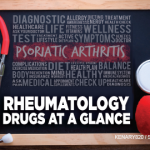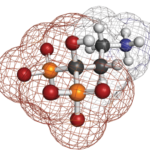
WindNight / shutterstock.com
As we turn the corner on the second decade of biologic use for rheumatic disorders, a reappraisal of approach in our communication with patients is due. In practice, the impact these agents have on patients’ lives justifies the friction rheumatologists face when connecting patients to them. You can understand why older rheumatologists who apprenticed on gold, penicillamine and those “cancer” drugs, methotrexate and azathioprine, are so enamored of the current therapeutic era. Not only has it fostered a genuine sense of control over the autoimmune chaos confronting our patients for the first time, the risks also appear relatively modest.
The same tensions felt long ago about infection and cancer when adopting conventional synthetic disease-modifying anti-rheumatic drugs (csDMARDs) arose again in our collective psyche as we entered the biologic age. As before, the preponderance of positive experiences has begun to allay our reservations. Notwithstanding comorbidities or histories that might put the individual in front of us at extra risk, we proceed more confidently. Nonetheless, our speeches to patients and the related media they encounter remain heavy on the risks. It may be time for modification.
Background
In recent years, the aggregation of our clinical experience and real-world evidence reveals a growing ambiguity between the boxed warnings for biologic agents and information not factored into the warnings. The admonitions for the biologic and small molecules we use are similar and class based, with little deviation from the initial versions exemplified by that for infliximab in 1998:1 “Patients treated with Remicade (infliximab) are at increased risk for developing serious infections that may lead to hospitalization or death.”
Increased? Compared to what? In most randomized, controlled trials of biologic agents for rheumatic disorders, the cohort receiving the investigational biologic agent has a few percent higher reported serious infections than do controls. Occasionally, the reverse is true. The differences cited in serious infection rates between the comparator arm for anti-tumor necrosis factor (TNF) class drugs (infliximab, adalimumab and etanercept) are not statistically significant.2,3 Nonetheless, for adverse events considered serious or life-threatening, even insignificant differences between active and comparator arms elicit these boxed warnings.
Even if the warnings are a bit overblown, we are okay with that. A multitude of non-rheumatology healthcare workers will encounter our patients on biologic agents in a variety of settings and should be sharply alerted to the potential that a patient may be less able to confront an infection without assistance. The trap lies in the reflexive attribution of every microbial encounter to the drug rather than considering other aspects of the patient’s life condition.
Truly informed consent compels a shift from emphasis on dire risks toward responsible optimism.
What matters, ultimately, is not whether the boxed warning is literally correct, but rather whether one implements the safe practices called for in the remainder of the text. These precautions include screening for the presence of chronic infections, such as tuberculosis, coccidioidomycosis, and hepatitis B and C, withholding new starts in people with active infections, suspending the drugs during periods of active infection or for elective surgical procedures, remaining observant for patterns of increased incidence of serious infections in people on the drugs and pursuing appropriate actions in patients who manifest serious infections.
Full prescribing information for drugs is updated periodically based on U.S. Food and Drug Administration (FDA) review of reported adverse events and post-marketing data. No warning, it seems, ever gets walked back based on real-world evidence. The FDA does not ordinarily integrate into such warnings the favorable information that accumulates over the years after drug approval. Within registry, pharmacy, insurance, medical record, hospital billing, actuarial and other sources, comparisons are generally made not between groups of patients with rheumatoid arthritis (RA) on different arms of a randomized, controlled trial, but rather between people with and without RA (i.e., the general population).4 Some studies compare rates of events in RA patients in different chronologic periods (see Review section). In these comparisons, a different view regarding the question of increased serious infections emerges.
Review
Rheumatologists would do well to keep in mind the longer tale of mortality and comorbidities in RA. Long before our trepidation about infections or malignancies with the use of the newly available anti-TNF agents in the late 1990s, we knew serious infections and hematologic malignancies were inherently more common in people with RA than in the general population. These are, indeed, RA complications rather than treatment complications and, along with cardiovascular events related to uncontrolled systemic inflammation, lead to a shortened life expectancy for people with RA when compared with the general population.
Full prescribing information for drugs is updated periodically based on FDA review of reported adverse events & post-marketing data. No warning, it seems, ever gets walked back based on real-world evidence.
Several studies quantified that shorter life expectancy and identified the causes. A prospective study from 1989 by Erhardt et al. comparing an RA cohort with age- and sex-matched controls showed an increased incidence of death from myocardial infarction, pneumonia and complications of RA; the more intense the rheumatic disease manifestations, the higher likelihood of premature death.5
A multicenter registry analysis by Wolfe et al. in 1994 indicated the increase in RA deaths over the standard mortality rate in the background population was 2.26, with mortality strikingly increased for infection, lymphoproliferative malignancy, gastroenterological disorders and RA itself.6 Wolfe further noted the rate of death increased over time, related to the “progressive burden of disability, decrepitude, pain, treatment and treatment side effects operating over time … .” Most treatment side effects were related to prednisone.
Kazis et al. found mortality in RA correlated linearly with impaired mobility and general health perception.7
For the four decades to 1985, Gabriel et al. determined in three population-based cohorts that the excess mortality in RA had not been altered in the concurrent treatment milieu and that “people with RA have not enjoyed the same improvements in survival experienced by their non-RA peers,” with a reduction of about four years of life in women.8
Shifting forward to the period of 1987–2011, which overlaps with the first 13 years of biologic drug availability for RA, Kiadaliri et al. reported a downward trend in RA mortality rates globally.9
Contemporaneously, real-world evidence of a reduction in malignancy rates in RA using biologic agents also suggests preservation of immune competency in the task of tumor cell surveillance.10
Several reports seem to lead in a direction directly counter to the boxed warning for biologics regarding infections and RA. Studying the frequency of infection in people with rheumatoid arthritis compared with non-RA matched controls, Doran et al. calculated hazards ratios for serious infections was 1.83, and for any infection 1.70.11 This suggests patients with RA before the biologic era suffered almost twice the number of infections as the general population.
During the early years of biologic therapy for RA (1999–2006), Smitten et al. reported that infections in hospitalized RA patients occurred at nearly twice the rate as in non-RA patients, but asserted the small portion of the difference attributable to biologics was likely confounded by disease severity or channeling.12
More recently, Lindsey et al. administered the available live-viral herpes zoster vaccine to 160 rheumatic disease patients (mostly RA) on biologic agents (most commonly infliximab) at the end of one dosing interval.13 No patients developed shingles nor disseminated viral infection. Similarly, reactivation of resolved hepatitis B infection during treatment with TNF inhibitors such as infliximab has not been shown in a meta-analysis to be significantly increased over background rate of reactivation.14
In an observation from Germany, Richter et al. showed that RA patients on biologics who incurred serious infections were less likely than those on non-biologic treatments to develop sepsis and less likely to die if they developed sepsis.15

Rich T Photo / shutterstock.com
Boxed warnings report on several opportunistic infections that have occurred in RA patients taking biologics. Certainly, such infections have also occurred in RA and non-RA patients not taking biologics. To determine the incidence of these opportunistic infections, Rutherford et al. analyzed data from a British registry on RA patients taking biologics and found the incidence to be low, at slightly over one case per 1,000 patient-years.16 Their analysis also indicated the incidence per calendar year had decreased from eight per 1,000 in 2002 to less than one per 1,000 in 2015—during the biologic era.
In a recent systematic literature review of qualified studies on comparative safety of biologics vs. csDMARDs, the composite literature suggested a slightly higher risk for serious infection with biologics over csDMARDs, although the authors pointed out the more recent studies with low bias found no difference.17 This is relevant to the safety of anti-TNF biologics, because Lacaille et al. showed the use of csDMARDs does not increase the risk of infection in RA, and a study by Smitten et al. demonstrated the risk of hospitalized infections was diminished in patients taking the csDMARDs methotrexate and hydroxychloroquine compared with patients on no treatment for RA.12,18
Suspending csDMARDs around the time of elective surgery is no longer recommended because no difference in perioperative infections, wound healing or other complications can be demonstrated in comparison with continuing the drugs.19 Although consensus on the abstinence intervals for biologic drugs for elective surgeries is still formulating, in a retrospective analysis, George et al. found that Medicare patients who received infliximab less than four weeks before hip or knee arthroplasty were not at a higher risk of short- or long-term serious infection than those who had biologics withheld for longer time periods.3,20
Similarly, the CDC no longer recommends live vaccines be avoided in patients on csDMARDs. Jinno et al. found that hospitalizations for pneumonias and opportunistic infections in people with RA decreased between 1993 and 2013, although the incidence of sepsis rose, likely due, as in other studies, to sensitivity of coding for sepsis rather than actual increase in occurrence of sepsis.21
Lastly, also from 2017, Accortt et al. demonstrated from the Consortium of Rheumatology Researchers of North America (CORRONA), a large registry of rheumatoid arthritis patients, that low disease activity and remission rates in patients with RA are associated with lower serious infection rates.
Overall, biologics do not increase mortality.22 Rather, biologic agents for RA, including anti-TNF agents, are correlated with reduced all-cause mortality.23
Discussion
Although the literature cited here is neither systematic nor scoping, the sense that we can manage patients with these drugs safely is not simply motivated reasoning nor confirmation bias.
Many rheumatologists from the baby boom generation feel they have had two careers in treating rheumatoid arthritis and other rheumatic disorders: the pre-biologic era and the biologic era.
Through the 1980s and 1990s, achieving complete disease remission was uncommon; it was more common to witness the gradual debilitation and early demise of persons with RA from multiple complications. The disease itself makes already less mobile persons more vulnerable to infection and vascular complications. The corticosteroids to which we defaulted so often to keep people mobile and to diminish their pain rendered skin susceptible to tearing, ulceration and infection; promoted osteoporotic spine and hip fractures, exacerbating an already deforming disease; and broadly immunosuppressed everyone taking them. Serious and life-threatening infections were routine.
Although difficult to quantify, this dynamic has clearly changed in the new era. In our practice, for each patient identified (or who has self-identified) as having an increased frequency of infections on a biologic (and therefore had a change in treatment), we estimate five to 10 people have conveyed to us that they have experienced fewer infections since their RA has been well controlled on biologics. Nonetheless, as a practical matter, patients are reminded that no evidence exists to support the idea that biologics imbue them with any special protection from infection and that they must follow our recommended precautions and maintain regular face-to-face follow-up.
Although it’s possible our practice’s middle socioeconomic stratum is less susceptible to experiencing serious infection than poorer, inner city, indigent people or inhabitants of, or migrants from, areas endemic to granulomatous infections in the Global South or Eastern Europe, current registries don’t quantify such a difference.9 Two Latin American registries have reported a decreasing incidence of serious infections in RA patients treated with biologics over the past several years.24
Perhaps the most useful finding from early post-marketing data was the recognition of the increased rate of latent TB reactivation with anti-TNF use, which led to the rheumatology community’s response of uniform screening and effective prophylaxis that has effectively mitigated this risk.25,26 The same approach is applied to coccidioidomycosis and other regional granulomatous infections, and generally extended to all biologics and small molecule immunomodulators.27
The expanded view on biologic agents and infections in RA from these published reports and our clinical experience now seems to contradict the boxed warnings. Rheumatologists live with that ambiguity and continue to follow the explicit recommendations the warnings convey. Conceivably, following the recommendations is the reason why the warnings don’t seem to bear out in real-world practice.
What matters, ultimately, is not whether the boxed warning is literally correct, but rather whether one implements the safe practices called for in the remainder of the text.
It took nearly 40 years for us to adjust our concepts of the safety of csDMARDs. While adhering to reasonable precautions, time will tell if a similar story unfolds for biologics.
Evolution
How should we convey to patients that clinical trial safety data appear at odds with accumulated real-world evidence and clinical experience? As it does with disease management guidelines, the ACR could assist clinicians by developing valid talking points for rheumatologists and their advanced practice clinicians to strengthen their discussions with patients. Scripting an enlightened conversation of benefits and risks could promote a more balanced discourse, not only between providers and patients, but among payers, the medical-legal establishment and in direct-to-consumer advertising. As it stands, information from each of these elements of the public domain confounds the conversation between providers and patients. As therapeutic options expand, not least the biosimilars, a renovation in this discourse is needed.
In the meantime, we suggest the mechanics of a good discussion are not complex. With a patient facing a treatment choice, a shared decision-making process is recommended, and communication should be individualized to the patient’s needs and concerns.28-30 Clinicians should first underscore the need for the medication and the intended benefit. Providers, being well aware of risks, often neglect the opportunity to lead with the positive—the benefit. At the same time, patients often quickly divert the discussion to “What are the side effects?”
Rheumatologists can redirect by saying, “Ahead of that discussion, let’s first talk about what we gain in terms of disease control and remission.”
The risks of the disease itself should be front and center. Borrowing from our colleague Jack Cush, MD, “RA is the real 800 lb. gorilla in the room; medication side effects are only potential effects.” Whereas the disease poses real and present danger from clinical symptoms, joint damage, deformity, dysfunction, disability and systemic comorbidities, the probability of any particular side effect is relatively quite small. In accessible terms, Dr. Cush has also quipped that “It’s the engine that kills you, not the caboose.”31 He concludes that infection is more closely tied to disease activity and debility, making RA itself the prime risk factor for severe infections, that csDMARDs pose a minuscule risk and that biologics have a small, often insignificant, risk that only becomes meaningful in patients with the most disease activity and complications, and steroid use.
Providers might then characterize potential adverse events for patients in terms of tolerability or toxicity. Tolerability refers to the most common adverse effects seen in randomized, controlled trials, such as upper respiratory infections, nasopharyngitis, headache, nausea and abdominal pain. Although FDA warnings may be invoked when such events occur in a treatment arm in excess of the placebo arm, even by insignificant percentages, a small minority of patients on active agent actually experience them. Whether or not treatment is interrupted, these adverse effects invariably resolve.
Toxicity, on the other hand, refers to serious events, such as malignancies, organ damage and serious infection events (i.e., infections requiring hospitalization or intravenous antibiotics). An acceptable range of serious infection events in clinical trial data is 3.5%. Hearing the 96% odds that one will not experience a serious infection may help patients contextualize their absolute risk. Occurrences of malignancies and gastrointestinal perforations are much fewer than serious infections events. All of these events are more likely in patients with uncontrolled RA.
The much higher rate of morbidity associated with corticosteroids should be brought into the picture for some patients, particularly where it pertains to serious infection events.
Conclusion
Our patients and the community at large deserve a more measured and representative briefing on the risks of serious infection events with biologic agents, not only from us, but also from regulatory agencies and pharmaceutical firms. Even if the low rates are the result of our adherence to the cautionary practice guidance in the boxed warning, truly informed consent compels a shift from emphasis on dire risks toward responsible optimism.
 Paul H. Caldron, DO, PhD, MBA, is a clinical associate professor at Midwestern University, Arizona College of Osteopathic Medicine; a clinical assistant professor at the University of Arizona College of Medicine; and a practicing rheumatologist at Arizona Arthritis and Rheumatology Associates in Phoenix.
Paul H. Caldron, DO, PhD, MBA, is a clinical associate professor at Midwestern University, Arizona College of Osteopathic Medicine; a clinical assistant professor at the University of Arizona College of Medicine; and a practicing rheumatologist at Arizona Arthritis and Rheumatology Associates in Phoenix.
 John R.P. Tesser, MD, is a clinical assistant professor at Midwestern University, Arizona College of Osteopathic Medicine and a practicing rheumatologist at Arizona Arthritis and Rheumatology Associates in Phoenix.
John R.P. Tesser, MD, is a clinical assistant professor at Midwestern University, Arizona College of Osteopathic Medicine and a practicing rheumatologist at Arizona Arthritis and Rheumatology Associates in Phoenix.
References
- U.S. Food and Drug Administration. Remicade: Full prescribing information. 1998:1–25.
- Dao K, Herber M, Habal N, et al. Nonserious infections: Should there be cause for serious concerns? Rheum Dis Clin North Am. 2012 Nov;38(4):707–725.
- Cush JJ. Rules for drug cessation with infection. RheumNow. 2017 Oct 4.
- Berger M, Daniel G, Katherine F, et al. A framework for regulatory use of real-world evidence. Duke. Margolis Center for Health Policy. 2017 Sep 13.
- Erhardt CC, Mumford PA, Venables PJ, Maini RN. Factors predicting a poor life prognosis in rheumatoid arthritis: An eight year prospective study. Ann Rheum Dis. 1989 Jan;48(1):7–13.
- Wolfe F, Mitchell DM, Sibley JT, et al. The mortality of rheumatoid arthritis. Arthritis Rheum. 1994 Apr;37(4):481–494.
- Kazis LE, Anderson JJ, Meenan RF. Health status as a predictor of mortality in rheumatoid arthritis: A five-year study. J Rheumatol. 1990 May;17(5):609–613.
- Gabriel SE, Crowson CS, Kremers HM, et al. Survival in rheumatoid arthritis: A population-based analysis of trends over 40 years. Arthritis Rheum. 2003 Jan;48(1):54–58.
- Kiadaliri AA, Felson DT, Neogi T, et al. Brief report: Rheumatoid arthritis as the underlying cause of death in thirty-one countries, 1987–2011: Trend analysis of World Health Organization mortality database. Arthritis Rheumatol. 2017 Aug;69(8):1560–1565.
- Wadström H, Frisell T, Askling J, et al. Malignant neoplasms in patients with rheumatoid arthritis treated with tumor necrosis factor inhibitors, tocilizumab, abatacept or rituximab in clinical practice. JAMA Intern Med. 2017 Nov 1;177(11):1605–1612.
- Doran MF, Crowson CS, Pond GR, et al. Frequency of infection in patients with rheumatoid arthritis compared with controls: A population-based study. Arthritis Rheum. 2002 Sep;46(9):2287–2293.
- Smitten AL, Choi HK, Hochberg MC, et al. The risk of hospitalized infection in patients with rheumatoid arthritis. J Rheumatol. 2008 Mar;35(3):387–393.
- Lindsey S, Oufnac B, Walker H. Safety of zoster vaccination administration in rheumatic patients on current biologic therapy. Arthritis Rheumatol. 2014;66:S806.
- Lin T-C, Yoshida K, Tedeschi SK, et al. Risk of hepatitis B reactivation in inflammatory arthritis patients receiving disease modifying anti-rheumatic drugs (DMARDs): A systematic review and meta-analysis. Arthritis Care Res (Hoboken). 2018 May;70(5):724–731.
- Richter A, Listing J, Schneider M, et al. Impact of treatment with biologic DMARDs on the risk of sepsis or mortality after serious infection in patients with rheumatoid arthritis. Ann Rheum Dis. 2016 Sep;75(9):1667–1673
- Rutherford A, Patarata E, Subesinghe S, et al. Opportunistic infections in rheumatoid arthritis patients exposed to biologic therapy: Results from the British Society for Rheumatology biologics register for rheumatoid arthritis. Rheumatology (Oxford). 2018 Jun 1;57(6):997–1001.
- Ramiro S, Sepriano A, Chatzidionysiou K, et al. Safety of synthetic and biological DMARDs: A systematic literature review informing the 2016 update of the EULAR recommendations for management of rheumatoid arthritis. Ann Rheum Dis. 2017 Jun;76(6):1101–1136.
- Lacaille D, Guh DP, Abrahamowicz M, et al. Use of nonbiologic disease-modifying antirheumatic drugs and risk of infection in patients with rheumatoid arthritis. Arthritis Rheum. 2008 Aug 15;59(8):1074–1081
- Goodman SM, Springer B, Guyatt G, et al. 2017 American College of Rheumatology/American Association of Hip and Knee Surgeons guideline for the perioperative management of antirheumatic medication in patients with rheumatic diseases undergoing elective total hip or total knee arthroplasty. Arthritis Care Res (Hoboken). 2017 Aug;
69(8):1111–1124. - George MD, Baker JF, Hsu JY, et al. Perioperative timing of infliximab and the risk of serious infection after elective hip and knee arthroplasty. Arthritis Care Res (Hoboken). 2017 Dec;69(12):1845–1854.
- Jinno S, Lu N, Jafarzadeh SR, Dubreuil M. Trends of hospitalization for serious infections in patients with rheumatoid arthritis in the U.S. between 1993 and 2013. Arthritis Care Res (Hoboken). 2018 Apr;70(4):652–658.
- Poiroux L, Allanore Y, Kahan A, et al. All-cause mortality associated with TNF-α inhibitors in rheumatoid arthritis: A meta-analysis of randomized controlled trials. Am J Med. 2015 Dec;128(12):1367–1373.e1.
- Listing J, Kekow J, Manger B, et al. Mortality in rheumatoid arthritis: The impact of disease activity, treatment with glucocorticoids, TNFα inhibitors and rituximab. Ann Rheum Dis. 2015 Feb;74(2):415–421.
- Ranza R, Laurindo IM, Christopoulos G, et al. Decreasing trend of serious infections incidence rate along years in rheumatoid arthritis patients exposed to biologics. Data from two Latin America registries (abstract). Arthritis Rheumatol. 2017 Oct; 69(suppl 10).
- Dobler CC. Biological agents and tuberculosis: Risk estimates and screening strategies. Int J Rheum Dis. 2015 Mar;18(3):264–267.
- Liao TL, Lin CH, Chen YM, et al. Different risk of tuberculosis and efficacy of isoniazid prophylaxis in rheumatoid arthritis patients with biologic therapy: A nationwide retrospective cohort study in Taiwan. PLoS One. 2016 Apr 11;11(4):e0153217.
- Taroumian S, Knowles SL, Lisse JR, et al. Management of coccidioidomycosis in patients receiving biologic response modifiers or disease-modifying antirheumatic drugs. Arthritis Care Res (Hoboken). 2012 Dec;64(12):1903–1909.
- Fraenkel L, Nowell WB, Michel G, et al. Preference phenotypes to facilitate shared decision-making in rheumatoid arthritis. Ann Rheum Dis. 2018 May;77(5):678–683.
- Lofland JH, Johnson PT, Ingham MP, et al. Shared decision-making for biologic treatment of autoimmune disease: Influence on adherence, persistence, satisfaction and healthcare costs. Patient Prefer Adherence. 2017 May 18;11:947–958.
- Siegel CA. Lost in translation: Helping patients understand the risks of inflammatory bowel disease therapy. Inflamm Bowel Dis. 2010 Dec;16(12):2168–2172.
- Cush J. It’s the engine that kills ya’ not the caboose. RheumNow. 2016 Sep 13.



